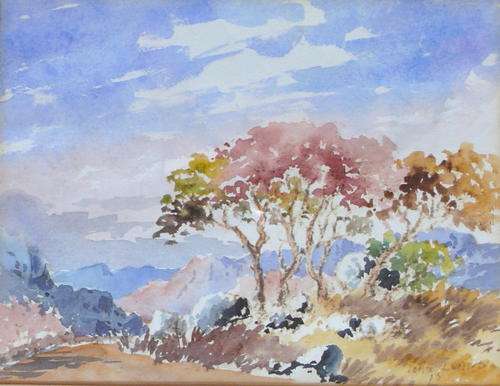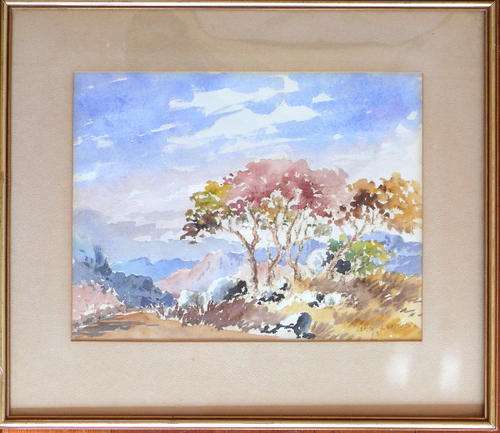And Joan Evans. Before her death in Harare seven years ago [1986] this popular landscape artist was asking only a few hundred rands for her now famous Zimbabwean and South African scenes. Today you would have to fork out thousands for the same paintings – if you were fortunate to find one available.
Yes, Joan Evans had many fans. While her oils mainly ended in this part of the world, some found their way to America, Australia, New Zealand, Europe, and even Russia.
Indeed, it was well known that foreign diplomats in Zimbabwe would go to great lengths to obtain a Joan Evans to take home as a warm reminder of that country’s wonderful scenic beauty.
Two exhibitions which Joan held in Durban in the 1960s were both sellouts, with people queuing for the doors to open.
But Joan didn’t really need exhibitions – she could never keep up with the demand.
While art critics might describe her paintings as chocolate-boxy, this was the very reason people adored them.
When in full production flow, Joan had anything up to 100 commissions lined up in her tiny notebook - “and the critics had to put that in their pipes and smoke it” says her proud son, Robin Evens, an architect who lives in the scenic Zimbabwean town of Mutare.
“The essence of mum’s appeal I think, was her excellent draughtmanship and her absolutely accurate perspective,” he says. She was also meticulous with her choice and use of colours.
Joan was born in Pretoria in 1905, the middle child of Colonel Algernon Capell, himself an artist of fair renown who almost annually trekked through the Zambezi Valley on foot. There he would sketch the dry, rugged mopani bushveld and later transfer the scenes onto canvas.
As a schoolgirl, Joan did all the posters and backdrops for school plays. As far as she knew, she was the first pupil to matriculate in art in what was then Rhodesia.
Joan and Walter were married in ‘30s. In their earlier years they were struggling tobacco farmers at Bindura, north of Harare. Life was tough for everyone in the 1930s and with three sons, one who died of diphtheria, and a daughter, the family’s finances were tight. Joan realised that her talent would have to be exploited in order to properly educate the children and help make ends meet.
Finally, when Robin and his brother, David both decided to become architects, the Evanses sold their farm and moved to the then Salisbury in 1952. There she found a market at her door.
About a month later, shortly before she was to be discharged, Joan decided she’d had enough.
One evening in April 1986, in the solitude of her room at St. Giles, the now deeply depressed artist took her own life in the gentlest way possible, by pulling a bag over her head.



